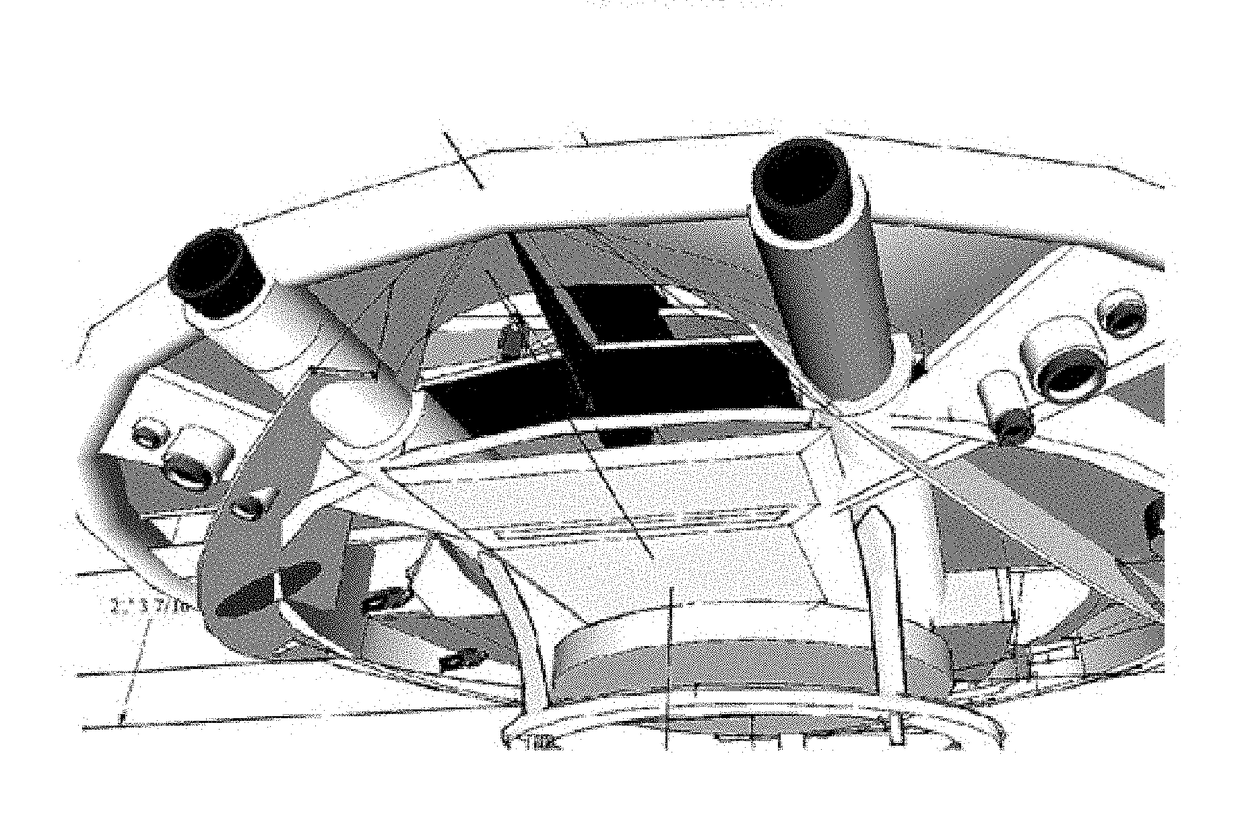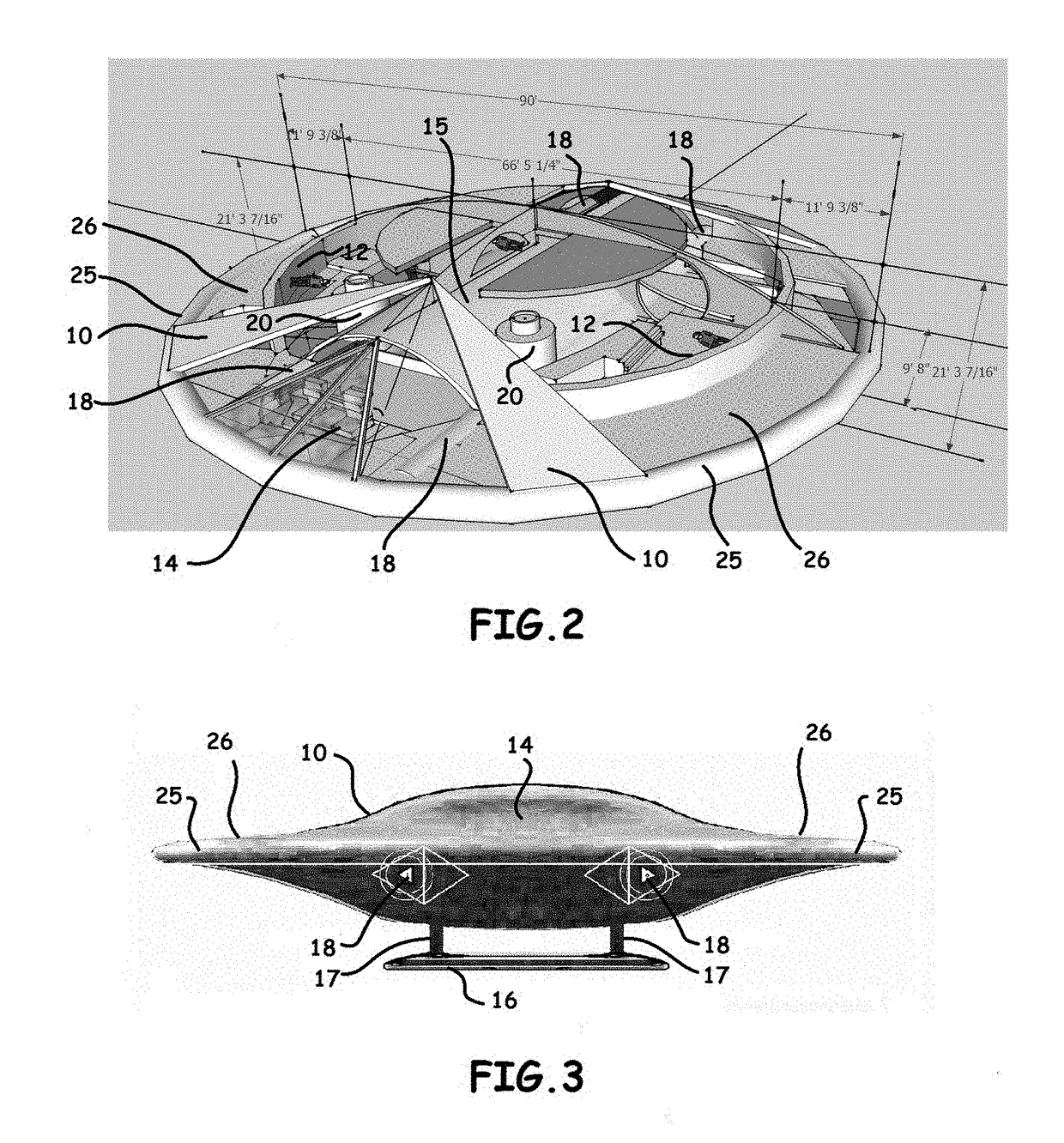Centripetal aerodynamic platform spacecraft
a spacecraft and centrifugal technology, applied in the field of aerodynamic platform spacecraft, can solve the problems of limiting the possibility of increasing the volume of passenger habitable zones and payloads per cubic foot of craft structure and surface area, requiring multiple payloads and launches, and too large space station structures and surface area, etc., to achieve the effect of reducing the required liquid oxygen and related booster tank capacity weight, reducing cost, and reducing heigh
- Summary
- Abstract
- Description
- Claims
- Application Information
AI Technical Summary
Benefits of technology
Problems solved by technology
Method used
Image
Examples
Embodiment Construction
[0077]Referring now to the invention in more detail, in FIG. 1 there is shown an aerodynamic platform spacecraft, 10 with stealth properties.
[0078]Referring now to the invention in more detail, in FIG. 2 there is shown an aerodynamic platform spacecraft, 10 having a circular centripetal rotating gravity corridor or corridors, 12 held in a substantially curved vertical position elevated or at right angle above the floor deck by an aerodynamic body, namely a lifting body, 10, a ring wing or similar under carriage wings, 16 and internal to the lift body two parallel engines, 18. The aerodynamic platform spacecraft has the ability to enter space on its own power with new industry inline hollow core turbojet-scramjet-rocket engines with shared intake and exhaust shown in FIG. 29. Two vertical lift hybrid turbojet rocket engines, 20 provide front vertical lift. Each of the components, 10, 16, 18, 20 is attached to the internal 1G producing centripetal corridor, 12 within the aerodynamic l...
PUM
 Login to View More
Login to View More Abstract
Description
Claims
Application Information
 Login to View More
Login to View More - R&D
- Intellectual Property
- Life Sciences
- Materials
- Tech Scout
- Unparalleled Data Quality
- Higher Quality Content
- 60% Fewer Hallucinations
Browse by: Latest US Patents, China's latest patents, Technical Efficacy Thesaurus, Application Domain, Technology Topic, Popular Technical Reports.
© 2025 PatSnap. All rights reserved.Legal|Privacy policy|Modern Slavery Act Transparency Statement|Sitemap|About US| Contact US: help@patsnap.com



